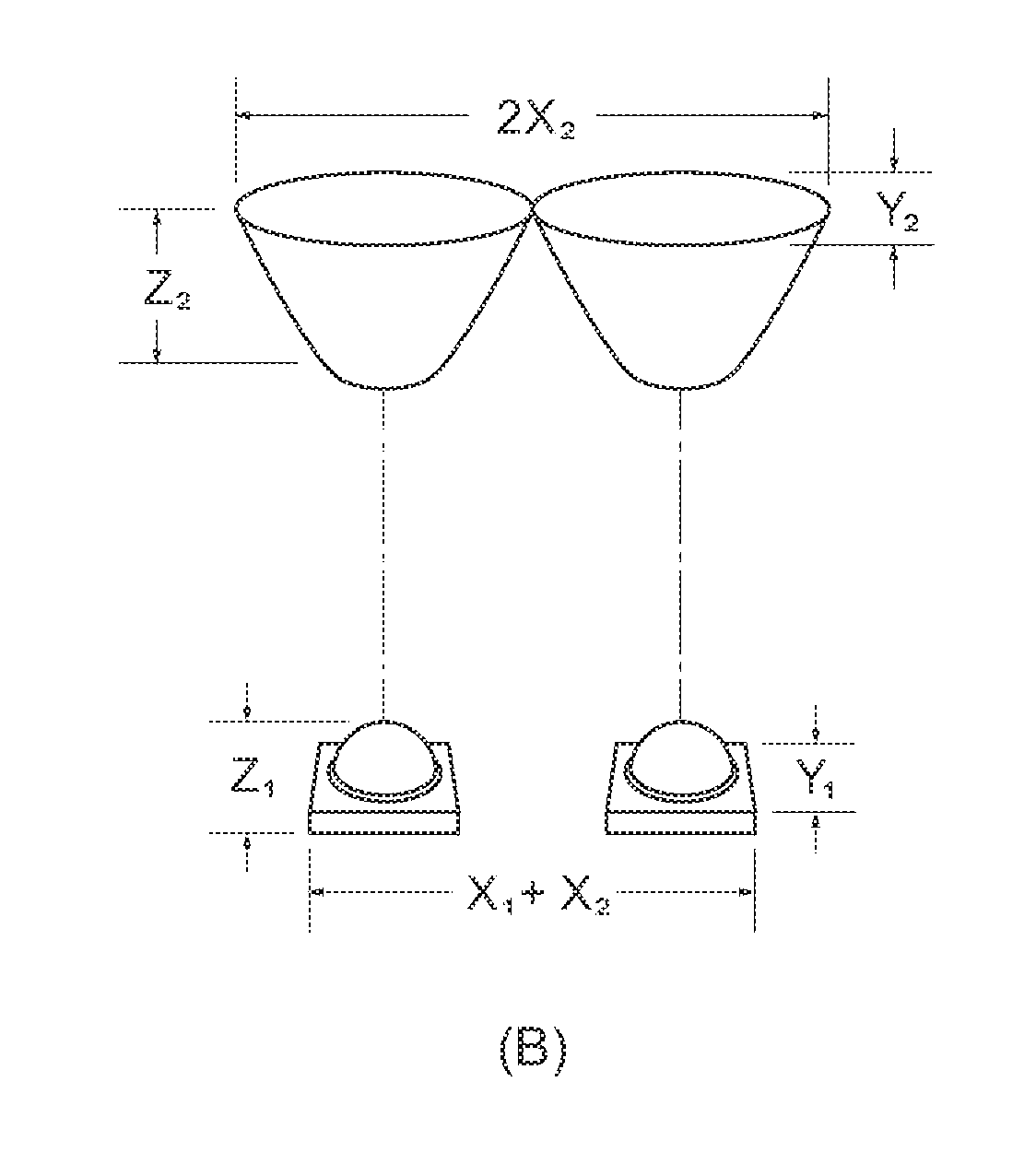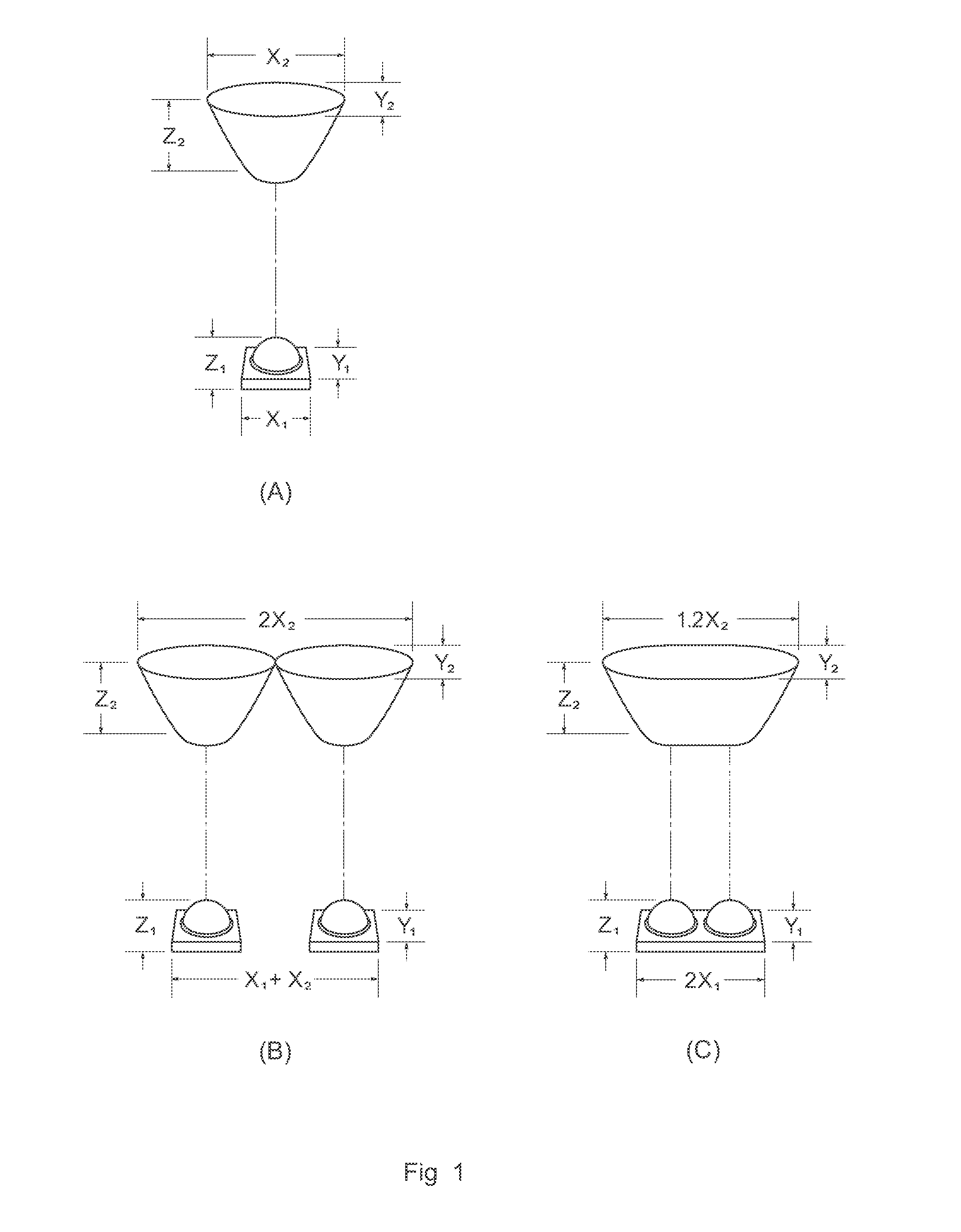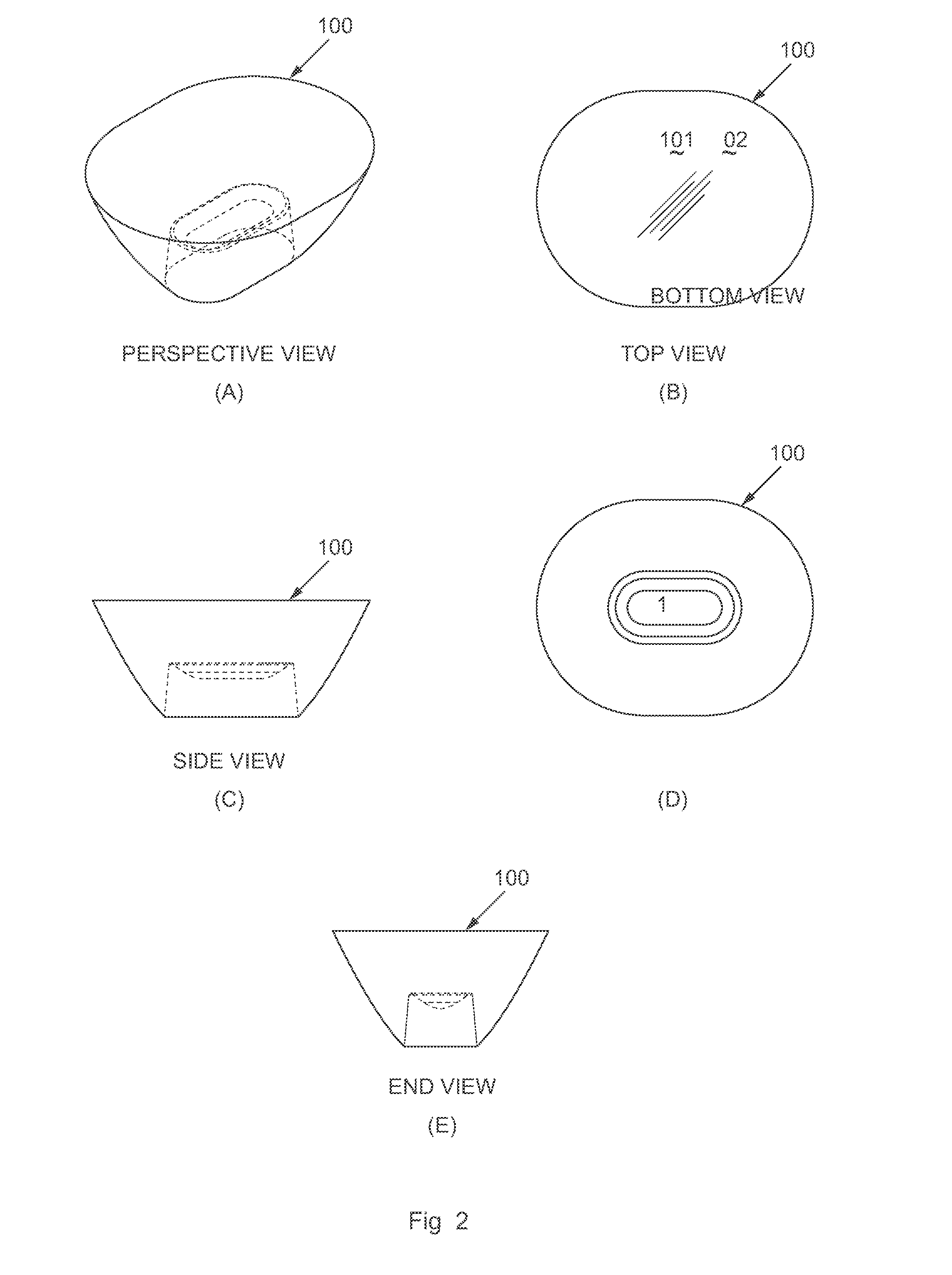Lighting system having a multi-light source collimator and method of operating such
- Summary
- Abstract
- Description
- Claims
- Application Information
AI Technical Summary
Benefits of technology
Problems solved by technology
Method used
Image
Examples
embodiment 1
[0032]B. Exemplary Method and Apparatus Embodiment 1
[0033]Envisioned is a luminaire employing a plurality of LEDs of sufficient type and in sufficient number so to approximate the light output of a traditional HID lamp used in wide-area lighting applications; an example of the latter is model 37405 quartz metal halide lamp available from GE Lighting Headquarters, Cleveland, Ohio, USA. According to aspects of the present invention, two or more LEDs are placed side-by-side to form a linear array, a single set of optical devices used for each linear array so to reduce the cost of the luminaire—or at least reduce the increase in cost of the luminaire. So for example, a linear array of two LEDs sharing a single lens, visor, and / or reflector essentially doubles the number of LEDs without doubling the number of optical devices; in essence, doubling the light output capacity without doubling the cost. This is contrary to conventional wisdom because it is known that multi-chip LEDs are comme...
embodiment 2
[0054]C. Exemplary Method and Apparatus Embodiment 2
[0055]In some situations, a combination of factors could steer one away from a linear array of LEDs even if the corresponding beam output pattern is desirable. For example, one may find that to achieve a target efficacy for a given size of luminaire, a linear array of LEDs does not permit adequate packing of light sources in the available space. In some situations it may be preferable to produce a beam output pattern symmetric about all axes. In some situations it may be found that for a given model of LED, light losses are more readily attributed to droop than to increased temperature. In such a situation, to achieve a desired efficacy one may need to consider including more LEDs per lens so to diminish the effects of droop while accepting an increase in overall temperature. For whatever reason, it is not a departure from aspects according to the present invention to design a non-linear array for use with envisioned lens 100; this...
PUM
| Property | Measurement | Unit |
|---|---|---|
| Temperature | aaaaa | aaaaa |
| Luminous flux | aaaaa | aaaaa |
| Current | aaaaa | aaaaa |
Abstract
Description
Claims
Application Information
 Login to View More
Login to View More - R&D
- Intellectual Property
- Life Sciences
- Materials
- Tech Scout
- Unparalleled Data Quality
- Higher Quality Content
- 60% Fewer Hallucinations
Browse by: Latest US Patents, China's latest patents, Technical Efficacy Thesaurus, Application Domain, Technology Topic, Popular Technical Reports.
© 2025 PatSnap. All rights reserved.Legal|Privacy policy|Modern Slavery Act Transparency Statement|Sitemap|About US| Contact US: help@patsnap.com



